- Home
- Francis Spufford
True Stories Page 2
True Stories Read online
Page 2
And the same applies to other deliberate violations of convention. Fictions that refuse to resolve, fictions that withhold the casual interiority we’re used to, fictions that attend to aspects of our biological life we agree to exclude – Leopold Bloom seated in your outhouse, I’m looking at you – all, also, ask us to find them truthful in proportion as they don’t do what fictions normally do. Implicitly, they invoke the binary in which fiction is not-truth, and truth is not-fiction. Though we may not consciously equate stories with lies, a suspicion lingers in us, and can be awakened. A novel can suggest to us, for effect, that we ought to worry about all this contrivance.
But most of the time, the truth-telling a novel can do is enabled by its artifice. It is because fiction can fold the world that it can interpret it. It is because fiction can offer us a world more legible than the world that it can lead us to truthful recognitions that would elude us in the world. It is because fiction can select and concentrate aspects of our experience – can distil the ‘booming, buzzing confusion’ in which everything happens at once into one singular mood at a time – that it can return us to the confusion better able to distinguish what really tangles and mingles there. It is because fiction can swap out qualities from characters, persons from settings, cultures from histories and vice versa, that it can recognise true possibilities for our experience that the world has not, in fact, contained yet. It can put real toads in imaginary gardens, and imaginary toads in real gardens. It can be telescope, microscope, tool, consolation, distraction. Also, of course, it can be a box of nonsense: if not quite lying to us, then still purveying sweetened, pre-chewed, over-easy alternatives to truth. But that’s the price of its power.
The narrative nature of the Christian gospels, and therefore the need to take them (in part) on the tricksy ground between truth and lies where story lives, is not their most-advertised quality. But there it is, implicit in their secondary status. While for Muslims the Quran is God’s direct action in the world, His presence and voice textually realised, for Christians, Christ is: the man, not the books describing him. The gospels point to God’s presence rather than being it. In serviceable but not literary Greek, the trade tongue of the eastern Mediterranean in which you might negotiate for a shipload of olive oil, they offer us narrative biographies which trace the same figure onto paper four times over, slightly different in outline each time.
Thanks to textual criticism, we have learned to see the layers in the writing, the uncertain readings, the evidence of patches and insertions from previous manuscripts, the elements that are leftovers from debates at the time of writing, or rhetorical commonplaces. Yet, through this darkened and imperfect glass, if you are a believer, you see. And what comes blinking and swimming, and then flicking into momentary clarity, and then blurring again in the optic of the prose, is truth in the form of story.
Not the form of sermon, or philosophy, or persuasive argument, but story, requiring as all stories do the active participation of the reader to bring it the rest of the way to life; and just to intensify things, to deepen the narrative abyss, to make it all a bit more meta, it’s the story of a storyteller. The greater arc of the story is the bizarre tragedy-with-a-happy-ending of Christ’s life and death and life – the only one I know that ends with an execution and then a wedding, featuring the same protagonist. Then, inset within it, and often forming the passages of the larger story about which the gospel writers feel most confident and unanimous, are all the stories he told. The famous ones that have spread out in the culture and gone proverbial; the radiantly clear ones; the harsh ones; the obscure ones; the paradoxical ones that make you dizzier the longer you look. As parables, they are necessarily in the business of offering non-literal truth; and they won’t summarise, they can’t be accurately reduced to abstract rules and principles. They show rather than tell because what they want us to know – what he wants us to know, reaching out to us through layers of text, and layers of translations, and the litter of olive-oil receipts – can be shown better than it can be told. Or maybe it can only be shown and not told to narrative-loving, finite creatures like us, as we bustle our way briefly through our loves and our sorrows and our tribal loyalties and our zero-sum games.
Christians take what the fictions of the Prodigal Son and the Talents and the Good Samaritan show us, as truth. But it’s creed, not credulity. We know that the structure of our belief rests on a historical assertion about the nature of Christ which could, in principle, be falsified, but which is unlikely ever to be verified; we also know that to believe in a story, especially one like the gospel that’s hybridised between non-fiction and fiction, requires patience and receptiveness, the reader’s counterpart to Keats’s waiting and responding without too much pre-emptive shoving of things into order.
Christian devotion has often been readerly in this way. There’s the whole tradition of lectio divina, which deliberately diverts analysis into attention. There’s the ‘application of the senses’ in St Ignatius’ Exercises where, for four separate hours in a day, you attempt to smell, touch, taste, see, hear a gospel passage. A tree that is only a bare noun in scripture becomes a particular wind-bent olive or hawthorn which you know; the spilt wine at the wedding feast becomes a distinct red-purple puddle of Australian Shiraz; fish scales are rubbed like shreds of tarnish into the grain of the wooden seat in Peter’s fishing boat. And there’s more: beyond attention, there’s active embroidery, the response to scripture that generates para-scriptural narrative, producing names for the three wise men and Mary’s mother, backstories for the thieves crucified to Jesus’ left and right. Beyond that again, there’s the presence in imagination of the story for a writer who holds to its story-truth when you’re writing something – you think – quite different. Hard to describe but undeniable, it pulls on you from beneath the surface of your ostensible attention like a narrative attractor, drawing your hand more in some directions than others, until you find you, too, without consciously meaning to, have wanderingly traced on the surface of what you did intend a partial outline of it. As if the gospel were a pea making itself felt under many, many mattresses. No, wait, that’s a completely different story.
Is it difficult to be truthful? That depends on how much truth there is available. Perhaps in the end it comes down to a perceptual choice, from which an aesthetic choice follows. Is the world full, or empty? Is it a bleak place in which every utterance tends towards silence, and the undoubted gravitation of our mortality tugs every something constantly towards nothing? Do representations of it, to be truthful, have to squeeze with immense difficulty and tenacity at this entropic landscape to produce rare droplets of meaning? Or, is the world self-replenishing, immensely rich in particulars, patterns of particulars, principles of patterns of particulars which we might be tempted to take as Theories of Everything till some other complicating truth sends us back humbled to the great variform living and dying mosaic? Do representations of it, to be truthful, have to be greedily, awe-inspiredly plural, ready to invent and select, to tell truths straight and slant, to tilt the fabric till it discloses enough different moiré markings almost to defeat us, to find usable riches in fact and story and scripture?
I vote for the second, always and every time. I vote for the second vision and the second plan of work. I would rather build in gopherwood and potato peelings and broken circuit boards and bicycle spokes than in pre-cast concrete. And I don’t even know what gopherwood is, except that you can make arks out of it. I would rather babble than be silent. I would rather laugh, and weep, and praise.
Cold
The Arctic and the Antarctic are real places, with real histories: in the case of the Arctic, real human histories, both of the circumpolar native peoples and of settlers. But these exist in tension with the way that, for those who live elsewhere, polar places are created in imagination through story, are built up in culture upon a thick layer of tale-telling about heroic discovery, exploration, naming and claiming.
In Antarctica, indeed, where
there was never a human presence until the twentieth century, the narratives of exploration actually provide the lowest stratum of the entire human experience of the continent, and the period in which they happened is known as ‘the heroic age’, like the archaic layer in the history of ancient Greece, only happening on the threshold of the twentieth century and terminating with the First World War, instead of having to be deduced from a layer of carbon in the ruins of Mycenae. It was the greatest of the books from heroic Antarctica, Apsley Cherry-Garrard’s Worst Journey in the World, that got me interested in the poles in the first place, and sparked the writing of my own first book. I took the two tatty maroon volumes of the 1930s Penguin edition down from the shelf in 1985, and was captivated. Nearly thirty years later, I got to write an introduction to it, included here.
But over the decades, as well as the polar hero stories, I’ve found myself thinking about the strangely fictive qualities of polar landscape, so page-like in its whiteness; about the actual anthropology of real polar societies, and its ironic connections with the patterns outsiders see; about the roles that polar material has played in the ‘grand narratives’, both story and history, by which cultures remember.
WINTER NIGHT
Here comes the winter night. If we were our oldest ancestors, tucked into draughty recesses of caves with blue hands hugged around us as we slept, we’d be dreaming of summer: we’d be using our human freedom to step away from circumstances to wish that all mornings were June mornings, all noons burned yellow in the sky, all days ended in easy heat under green trees. But for us the night laps comfortably around warm houses. From within our walls the cold seems something to relish. The sharp air outdoors drives the blood from the surface of our fingers only so the soft air inside can return it, tingling. The darkness beyond the window glass gives us the black outer frame for winter comforts like a still-life. Red curtains, green leeks chopped for soup, oranges in a bowl. All glow more because they stand out from a border of shadow.
And, our bodies provided for, our imaginations travel – not away from winter, but farther into the elements we’re safe from, towards the heart of them. Snowy days invite strange journeys. Outside our houses, flakes whirl in the cones of brightness hung from street-lamps. Look up the line of their descent, directly along the wind that flies them into your mouth and eyes, onto your skin with a soft sting, onto your collar as temporary stars. They come uncountably, a sweeping hypnotic bombardment. And it’s there that we rise, in imagination, up the levels of the air through tumbling and weaving whiteness, streaking bodiless towards the symbolic source of winter. To the north, of course.
The shadows of the hedges lie violet on the white fields. Then the land ends beneath us, in a tussle of rocks and black water, and we arrow onwards, a gulf below and a gulf above, leaving home behind. No scheduled airline flies this route. This is the way the Snow Queen’s sleigh carried little Kay in Hans Christian Andersen’s story; this is a vector plotted across the geography of dream. The snow sinks into the black waves without a sound. Islands pass; Spitzbergen, Jan Mayen Land, spiky with mountains like coal pyramids dusted in icing sugar. But the sea’s motion slows now, and as the water thickens, gathers, hardens to ice, the sky clears too, so that the monochrome scheme reverses. It’s a world hard white below now, hard black above, lit by constellations quivering in their places. We have entered the Arctic of our minds: the silent domain of cold something in us demands as the proper form for the place from which the frost is distributed and the blizzards pour out. The six-months’-night that governs here seems the parent to the nights we know in December and January. They’re shavings from this inky, original block. We glide above the tumbled plain of the frozen sea. The second hand sweeps through the last few divisions on the clock-face where the degrees of north latitude register. Eighty-eight degrees, eighty-nine; 90°N and we descend at the imaginary capital of the imaginary empire of cold. The whole Earth spins beneath us, but all the movement we see at the North Pole is in the sky. The aurora airbrushes the dark with stately lilacs and purples. And perhaps there’s a polar bear. Its breath hoods its head in steam.
But that’s only one winter journey. It’s the one our imaginations have been taking for a while, encouraged by snowy works in every genre, from Raymond Briggs’s The Snowman to Miss Smilla’s Feeling for Snow, from Snow Falling on Cedars to the blizzard of interest in the polar explorer Ernest Shackleton. I thought I’d put all the familiar elements of winter’s snowy journey together and use them up in one glorious burst – I’m fond of them, as you can hear – so that afterwards, some space would be cleared for all of winter’s other journeys; which we need to hear about, because the real snow has been coming less and less often during the very time that imagination’s snow has fallen most heavily. Winter need not be white. It’s natural that we should want to assign one elemental identity to it. We’re myth-making creatures. We need the ancient, slow, general meanings for time to persist behind the quick particular things that happen in our particular lives. That’s how we make sense of the cycle of the seasons, which still overlays its rhythm on the linear time of our lives, even though in Britain now most of us have no working connection to seedtime and harvest. But without snow, winter is still the cold pause when nature slows; it’s still the old year’s death and the new year’s birth, meanings combined in the Christmas feast of the baby born to die; it’s still the ancient season of hospitality, when we put the still-life of winter food into sociable motion, and feed guests whose faces are also warmth in the cold to us. All of those are still there, and still open to all the colouring of circumstance, all the tragedy and comedy and anti-climax and indifference that events may bring. Look around; and take new journeys.
(1996)
ICE
Freezing is no mystery. At zero degrees centigrade the molecules of water interlock. They brace, then they expand, pushing a little farther apart from each other than they do in the sliding tangle of the liquid state. Each kinked trio of two hydrogen atoms, one oxygen, slots into place in a structure like a flanged, puckered hexagon. Water gains about 9 per cent extra volume, goes rigid, turns to glassy crystal: you’ve got ice, wherever it forms. In the chilled base of a cloud, though, ice grows in grains. The hexagons multiply on every rung of the ladder of size that leads up from the molecular to the visible world, till wafers of ice arranged in every possible permutation of the basic shape are mimicking, on a scale large enough to see, the molecule that first seeded the process. And snow begins the long tumble to earth – ‘like feathered rain’, said a Renaissance poet.
Mystery re-enters the science of ice in explanations of its bulk behaviour. The hard mathematics of complexity come in when you ask how the genesis of a billion individual flakes becomes the thrust of a blizzard, how the forces working on icebergs in Antarctica produce a particular candy-twisted specimen. Water’s solid state can arrange itself in many forms, many textures, many colours even. Ice glossaries and catalogues have been published by learned bodies to try to build at least an anecdotal vocabulary for the things you can observe ice doing at the macroscopic level. They’ll tell you about pancake ice and sastrugi, growlers and bergy bits. These are only the counterparts in the wild landscapes ice dominates – the Arctic, the Antarctic – to the cold plethora of freezings that visits a winter garden. The fur of frost on a clothes-line; the hard white rim of leaves; puddles like windows or stirred to a cloudy porridge; snow (of course) crusted or sludgy or powdery. Or waxy and audibly squeaking beneath the first shoe to compress it. But the intent look at the differences of the ice (as hard to resist as the gaze upward into the numberless white-on-grey whirl of falling snow) involves you in a long history of fascination. You’ve been seduced by qualities of ice not reckoned by physics or chemistry. What happens to the billion molecules of ice is one thing: what happens in the onlooker is less calculable still.
In countries where snow defines the landscape half the year, or all of it, snow may be disenchanted. Where it is temporary, as in Bri
tain, it is never wholly reduced to ordinariness, never quite aligned alongside mud and stubble as a constituent of the material economy of the real, from which no more can be expected than that it does what it does. It still promises transformation, a vague and magical erasure in accord with the dusting and muffling of familiar lines in whiteness. ‘A miracle’, said an Anglo-Saxon riddle for ice: ‘water become bone’. When it snows, the ground is prepared. For strange departures: it’s snowing outside the window just before Alice steps through the looking-glass. ‘I wonder if the snow loves the trees and fields, that it kisses them so gently?’ she asks her cat. Snow confounds ears, as well as eyes. Sound dwindles as snow wraps the surfaces of the world, abolishes echoes, takes the bounce out of the air. Yet the muting imposed by the snow registers as a positive hush rather than a simple absence of sound: a null signal broadcast by the cold, an unmistakeable white noise in the air that can be recognised on first waking without opening the curtains. The hush roared so loud it actually interrupted Coleridge’s train of thought while he was writing ‘Frost at Midnight’:
’Tis calm indeed! so calm that it disturbs
And vexes meditation with its strange
And extreme silentness.
Meanwhile the ‘secret ministry of frost’ was hanging up icicles, ‘quietly shining to the quiet moon’.
If ice seems unearthly, part of the reason must be that water is so intimate a substance for us. We drink, we spit, we cry. Blood is a solution of chemicals in water; human cells are a honeycomb largely filled with warm water. Below zero, the solvent of life has hardened into an altogether different material. And, left out naked in the cold, we would too. Even when it’s artfully sheathed in clothing, the difference between the temperature of freezing air and human operating temperature imposes an exact sense of the body’s boundaries. It makes the body a bubble of warmth rolling on a cold surface, life surrounded by something that would slow, immobilise, halt life if let in. The extra degree of conscious awareness of life that cold brings can be exhilarating. Existence fizzes in you while the faint retreat of your blood makes your fingers tingle. You’re sole, sovereign, indivisible in a hostile world. A Victorian mountaineer said that climbers above the snow-line have ‘the sensation that they do not actually press the ground, but that the blade of a knife could be inserted between the sole of the feet and the mountain-top’.

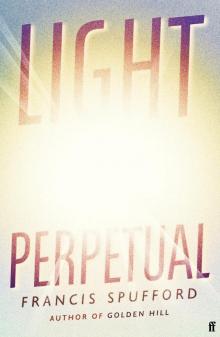 Light Perpetual
Light Perpetual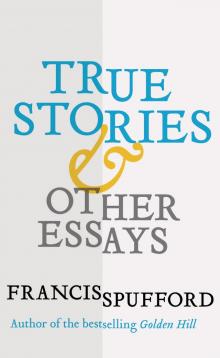 True Stories
True Stories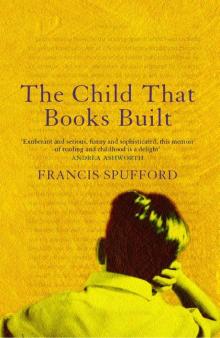 The Child that Books Built
The Child that Books Built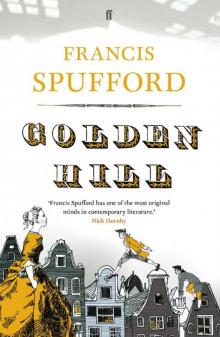 Golden Hill
Golden Hill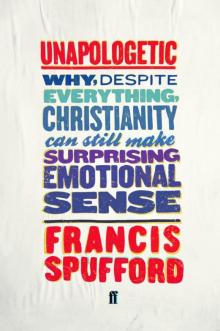 Unapologetic
Unapologetic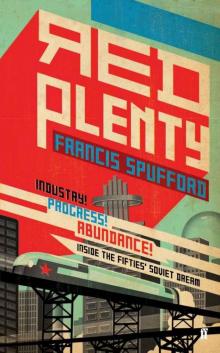 Red Plenty
Red Plenty Backroom Boys
Backroom Boys